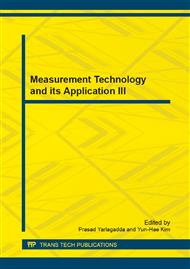p.659
p.663
p.668
p.672
p.676
p.681
p.685
p.691
p.696
Research on Intangible Cultural Heritage Based on Motion Capture
Abstract:
The application of digital technology on the protection of intangible cultural heritage is a major topic of research in recent years. The motion capture technology of protection will gradually replace the traditional recording methods such as texts, pictures and videos. It is valuable to build a high-fidelity, high-modular and low-cost digital platform for choreographic data collection and extended application. This paper studies the intangible cultural heritage of Quanzhou breast-clapping dance, one of the most famous choreographic intangible cultural heritages from China with standard optical motion capture method. The data are acquiring and processing after the dance motion capture, we binds the motion data and three-dimensional model using Motion Builder and build digital demonstration platform base on an OGRE engine to display the movements. The viewer can view at any angle and distance. The system can be easily applied in motion intangible cultural heritages protection project. Furthermore, the system can be provided versatile motion data for additional use.
Info:
Periodical:
Pages:
676-680
Citation:
Online since:
June 2014
Authors:
Price:
Сopyright:
© 2014 Trans Tech Publications Ltd. All Rights Reserved
Share:
Citation:


